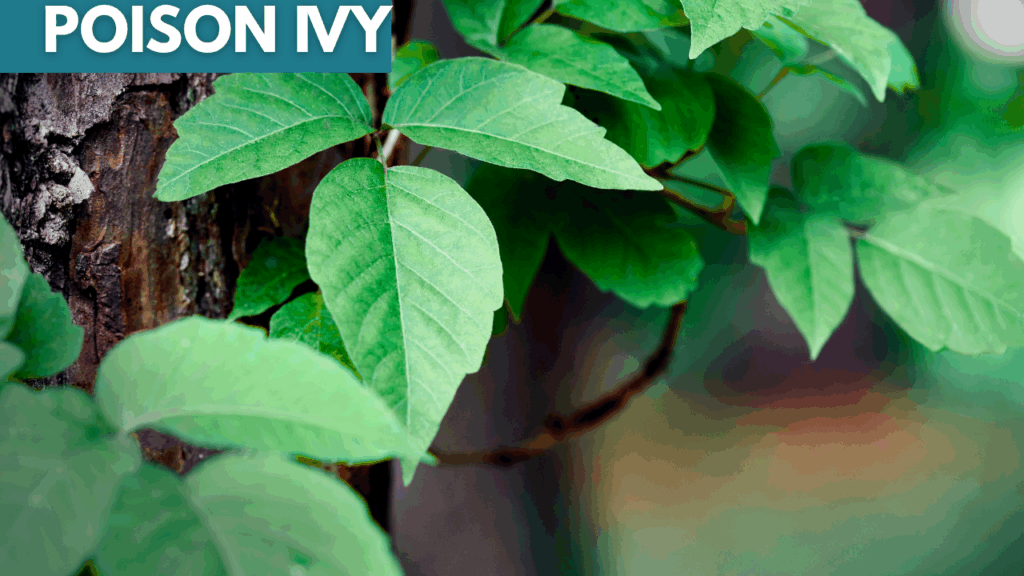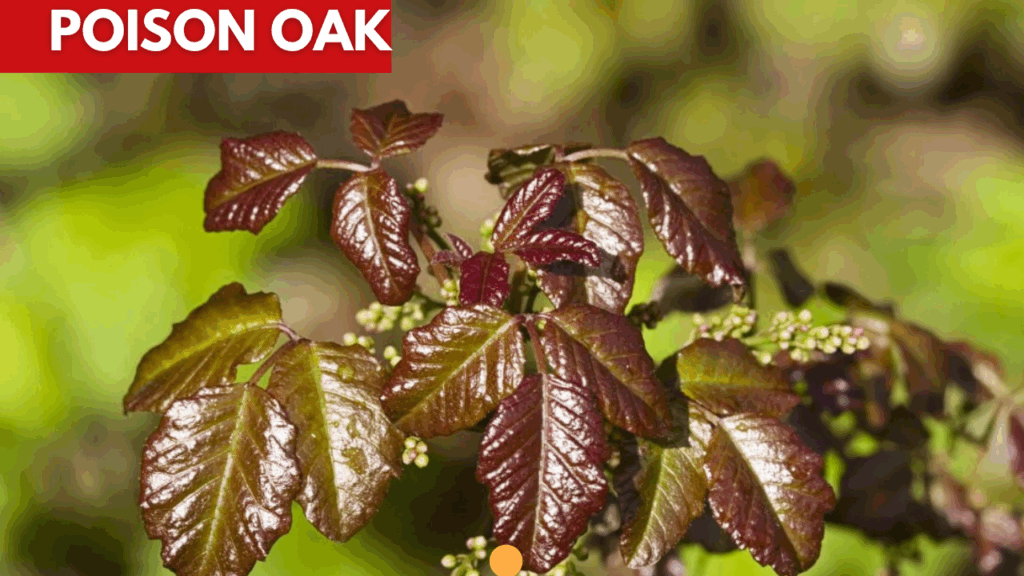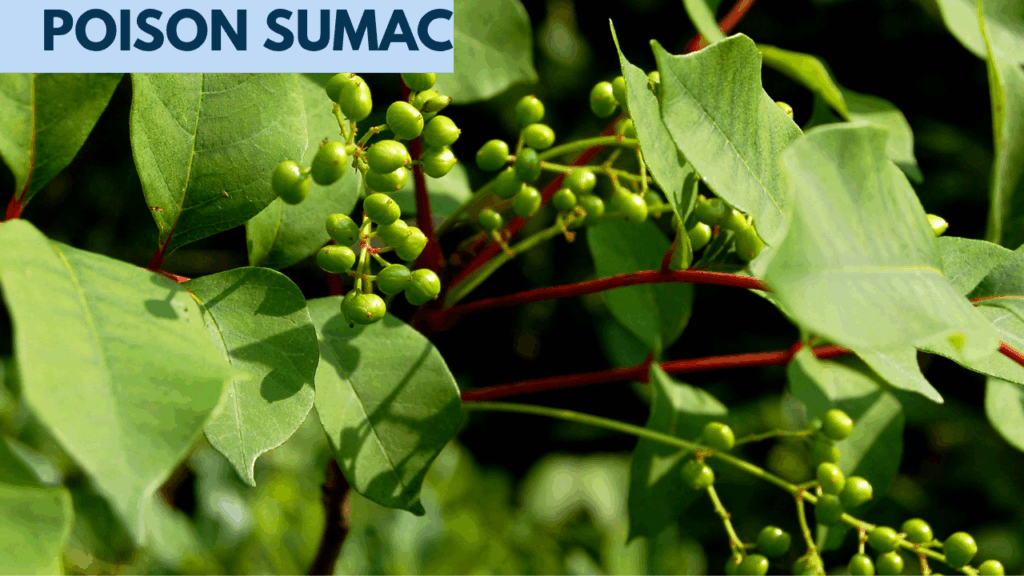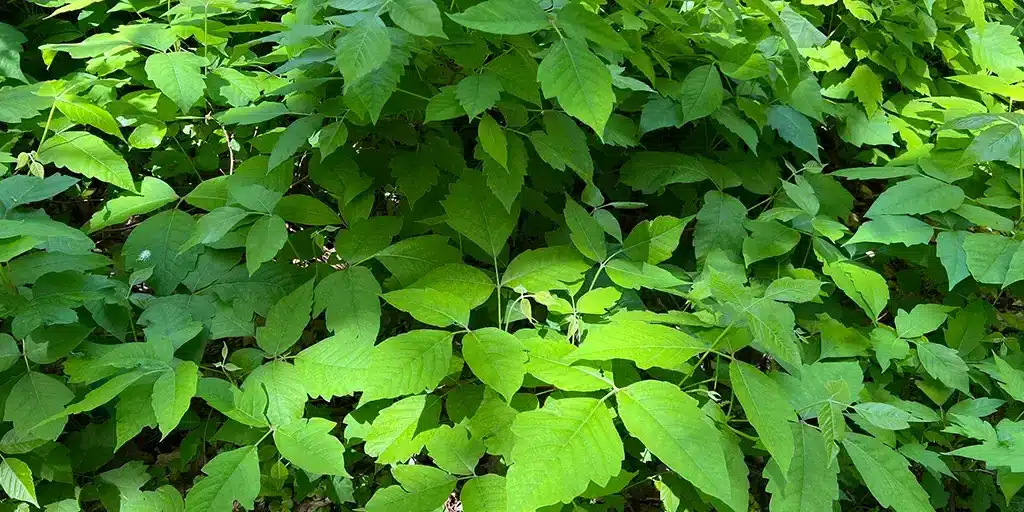Summertime means more time outside enjoying nature – and a greater chance of exposure to poisonous plants. Poison ivy, poison oak, and poison sumac produce an oil that almost everyone is allergic to. Urushiol is an irritating toxin that causes an allergic reaction in the form of an itchy, red rash often accompanied by blisters, bumps, and/or swelling.
Knowing how to identify these poisonous plants can help you avoid them, but sometimes contact is still made. That’s why it’s important to know how to treat allergic reactions to poison ivy, oak, and sumac.
What’s the difference between these poisonous plants?
Although the allergic reactions they produce are similar, these plants look different. Knowing their distinctions can help you spot (and avoid) them.
Poison Ivy

Poison ivy has three shiny leaflets with jagged edges that come to a point. The glossy leaves change color every season – red in the spring, green in the summer, and orange/red in the fall. It can also have white berries.
Poison ivy looks different depending on the region. It grows in a vine throughout the South, Midwest, and East Coast but looks like a woody shrub in the North.
Poison Oak

Like poison ivy, poison oak has three leaflets, but they are light green with fuzzy undersides and rounded tips. The plant grows as a shrub in the South and East Coast but in vines in the West. Their berries are white to greenish-yellow.
Poison Sumac

This plant looks very different from poison ivy and oak. Poison sumac has leaves with clusters of 7 to 13 smooth leaflets arranged in pairs that grow on a reddish stem. The green leaflets are oval-shaped with a pointy top, similar to a fern. Poison sumac thrives in wet, swampy regions.
What to do if you touch one of these poisonous plants?
If you come in contact with any of these poisonous plants, immediately clean the area with soap and lukewarm water. Use a scrub brush to remove any urushiol under your nails. Also, wash clothes and other items that may have touched these plants. The oils will wash off entirely if you do this within 15 minutes of exposure to poison ivy, oak, or sumac.
Rashes typically develop within 4 to 48 hours of contact, and they’ll be itchy and blistery. After washing the exposed skin thoroughly, you can treat itching with:
- Antihistamines like Benadryl
- Calamine lotion or other anti-itch creams
- Cool colloidal oatmeal baths
- Wet, cool compresses
It’s important not to scratch an itchy rash because it can introduce bacteria into the skin and cause an infection. So, even though it temporarily feels better, don’t scratch!
When should you seek medical attention for poison ivy, oak or sumac?
Rashes are usually mild and clear up within a few days to two weeks. However, if you experience any of these symptoms, see a healthcare provider immediately:
- Signs of anaphylaxis, including difficulty breathing, hives, and swelling
- Rash on the mucous membranes of eyes, nose, mouth, or genitals
- Rash covering more than a quarter of your body
- Rash feels tender to the touch or hasn’t cleared up within a week or two
- Pus oozing from blisters
- Itching is painful or unbearable
- Fever, red streaks, or other signs of infection
Integrity Urgent Care Can Help
Rashes from poison ivy, poison oak, or poison sumac are no fun, so don’t ruin your summer by getting too close to them! By learning to identify these poisonous plants, you can avoid them or quickly wash away the toxic oil if exposed.
Fortunately, most rashes clear up within a week with minimal treatment. But if you notice any of the severe symptoms listed above, Integrity Urgent Care, part of the Xpress Wellness family, can help you feel better! Walk into a location near you or check-in online today.
Read More: Poison Ivy, Poison Oak, Poison Sumac: How to Tell the Difference



